The History of Hapkido
By Scott Shaw
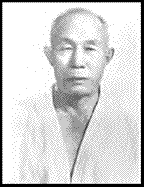 Yong Shul Choi, the founder
of Hapkido, was born in the town of
Yong Shul Choi, the founder
of Hapkido, was born in the town of
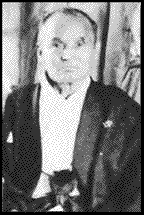 As fate would have it, Choi
eventually came to work for, Sokaku Takeda (1860-1943), the 32nd patriarch of
Daito Ryu Aikijitsu. Takeda was forty-four years old at the time Choi, a
seven-year-old boy, came to his service. Choi was given the Japanese name
Yoshida, Asao. The first or given name, Tatjuttsu, that is propagated as being
the name Choi used in
As fate would have it, Choi
eventually came to work for, Sokaku Takeda (1860-1943), the 32nd patriarch of
Daito Ryu Aikijitsu. Takeda was forty-four years old at the time Choi, a
seven-year-old boy, came to his service. Choi was given the Japanese name
Yoshida, Asao. The first or given name, Tatjuttsu, that is propagated as being
the name Choi used in
Takeda and Choi
Choi, now living under the employee of Takeda, in
We must place this association into historical
perspective to understand the true relationship between Takeda and Choi. At this
juncture of history, the Japanese viewed themselves as the "Divine
race." Koreans were simply thought of as a conquered people. Takeda,
perhaps came to be found of Choi, but due to his cultural programming, he would
never have accepted him as a son. Certainly, there were affluent individuals, of
Korean descent, who lived in
It is important to note that the true relationship
between Choi and Takeda was clearly known to all of Choi's early students --
including Hwa Rang Do Grandmaster and Founder Joo Bong Lee and Choi's first
student, Suh, Bok Sup. It is the later generations of western students who were
lead to believe that Choi was the adopted son of Takeda. Though it is impossible
to say where this myth was born, all of those who propagate this falsehood base
their knowledge on one interview conducted with Choi in 1982. It may simply be
that Choi's statements were misinterpreted or mistranslated in this interview,
as the statement of him being the adopted son of Takeda was never mentioned in
an media report in
Takeda's own son, Tokimune Takeda, stated that he never knew Choi, Yong Shul. This may be explained by the fact that Takeda possessed two distinct households. Only one of which housed his family. In addition, Japanese immigration records, of the late 1930's and early 1940's, list Choi, under his Japanese name, as an employee of Takeda.
Choi remained in the employ of Takeda for thirty years
until
It must be noted that there is no historic record of
Choi ever being certified as a student or teacher of Daito Ryu. The myth that
Choi lost his certificates while returning to
The Birth of Hapkido
As stated, Choi remained with Takeda for thirty years
until Takeda's death. Relieved of his duties, Choi returned to
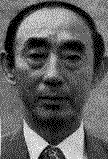 Choi's first
student was a successful brewery manager named, Suh, Bok Sup. Prior to his study
with Choi he had been awarded a 1st Dan Black Belt in Judo, under the direction
of Korean Judo instructor, Choi, Yong Ho. In February of 1948, the twenty-four
year old Suh witnessed Choi, who was then in his forties, get into a fight with
several men. Choi rapidly devastated his opponents. So impressed with his
technique, Suh summoned Choi to his office and inquired as to his style. This
meeting eventually lead to Suh hiring Choi, who had previously been a poor rice
cake seller and hog farmer since his return to
Choi's first
student was a successful brewery manager named, Suh, Bok Sup. Prior to his study
with Choi he had been awarded a 1st Dan Black Belt in Judo, under the direction
of Korean Judo instructor, Choi, Yong Ho. In February of 1948, the twenty-four
year old Suh witnessed Choi, who was then in his forties, get into a fight with
several men. Choi rapidly devastated his opponents. So impressed with his
technique, Suh summoned Choi to his office and inquired as to his style. This
meeting eventually lead to Suh hiring Choi, who had previously been a poor rice
cake seller and hog farmer since his return to
Suh, Bok Sup became instrumental in helping Choi open his first school of self-defense, which was established in February of 1951. He also became his first Black Belt. Due to Suh's advanced understanding of Judo, Suh lent some of this knowledge to the system that later became known as Hapkido. Many of the basic sleeve grabs, shoulder grabs, and throws, used in Hapkido, can trace their origin to Judo.
The initial name of the system of self-defense Choi taught was, Dae Dong Ryu Yu Sool. This is the Korean translation for Daito Ryu Jujitsu.
Initially, Choi taught his students a very pure form of Daito Ryu Aikijitsu. Many of the later students of Hapkido attempt to falsely date the origin of Hapkido to some ancient Korean art. This is historically inaccurate. Choi, himself, never made this claim.
As time progressed and other Korean martial art pioneers, such as General Hong Hi Choi (Taekwondo) and Hwang Kee (Tang Soo Do) were rediscovering and expanding upon the offensive nature of Tae Kyon, their discoveries influenced some of the advanced students of Choi, such as Ji, Han Jae, who slowly began to incorporate the very aggressive punching and kicking techniques into the overall understanding of Hapkido. Choi, himself, never taught kicking in association with Hapkido, however.
Hapkido's final criteria came through a slow testing
period, as did the other martial art systems born on the newly independent
Today, there is no one system of Hapkido, as is the
case with WTF Taekwondo, for example. As time has gone on, each teacher and
ensuing organization has integrated their own understandings and self defense
realizations into this art. There are, however, two distinct types of Hapkido.
The first are the schools that hold tightly to the original teachings of Yong
Shul Choi. This style of Hapkido will commonly be observed when visiting or
studying in the Hapkido dojangs located in the Taegue vicinity of
The continued evolution of Hapkido is a good thing. It has allowed the art to change and embrace the needs of each student in their own unique way.
Ji, Han Jae and the Evolution of Hapkido
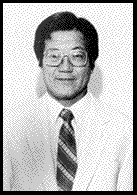 Grandmaster Ji,
Han Jae was born in
Grandmaster Ji,
Han Jae was born in
Grandmaster Ji is said to have additionally studied the ancient Korean martial arts and meditation from a Taoist monk referred to only as, Taoist Lee. Ji states that he combined the techniques of his two teachers and invented the term Hapkido in 1959. Original students of Choi Dojunim say, however, that the term Hapkido was first used by Choi before Grandmaster Ji decided to use the name. Thus, this issue may never be fully resolved as to who first used the name. But, it is of little historic importance.
It must be noted that due to the fact that Grandmaster
Ji relocated to
Due to his strategic location and dynamic personality,
he became a very influential figure in the development and evolution of Hapkido.
He was the instructor of many Hapkido practitioners who later become very famous
masters of the art and spread Hapkido across the world. These students include:
Grandmaster Kwon, Tae Mon (one of his first students and a man who helped
introduce Hapkido to the
Several of his original students no longer wish to be associated with him, however, due to differing personal ideologies. Thus, many Korean instructors no longer reference him as the source of their knowledge. Instead, they claim they studied directly from Yong Shul Choi - though this is factually not the case.
In 1961, Kim, Yong Jin who opened the Oh Ji Kwan School
of Hapkido, joined Grandmaster Ji in
In 1967 Grandmaster Ji initiated the use of the eagle as the logo for Hapkido. Later that same year, the first textbook on Hapkido was written by Hapkido Masters: Nyung, Kwan Shik and Kim, Jong Tek.
In 1968 another student of Ji, Myung, Kwan Shik, opened
a new Hapkido Kwan in
In 1969, Grandmaster Ji first visited the
In 1984, Grandmaster Ji officially relocated to the
Historically, it can be understood that Grandmaster Ji, Han Jae was one of the most influential and instrumental proponents of the art of Hapkido -- no matter who invented the name. Though he greatly expanded upon the art, as many advanced masters have done, he was, none-the-less, a direct student of Choi Dojunim. Thus, he did not invent the art. The foundation of Hapkido must be ultimately attributed to Choi, Yong Shul.
Hapkido's Governing Bodies
By the early 1960's the various South Korean based
schools of Hapkido were already fragment from the original teaching of Yong Shul
Choi. Seeking an official governing body, advanced teachers the art petition the
Korean government for a formalized organization. On
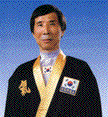 On
On
Grandmaster Seo was the first non-politician and actual martial art master to hold this appointment. He has maintained this position since his election.
The Evolution of the
As time progressed, fragmentation of Hapkido continued.
This was due to ongoing individual differences. In 1965, Ji, Han Jae left the
Korea Kido Association. He formed and became President of Daehan Hapkido Hae,
The Korea Hapkido Association. This association was formed with the blessing of
then
The reason President Park was so in favor of this new organization was, in no small part, due to the fact that Park, Jong Kyu, a student of Ji, Han Jae and head of the Presidential Protective Forces, was an instrumental element in its formation. In 1973 Ji, Han Jae resigned from this organization, with the hopes of taking many of its members with him and bringing them to a new organization he was instrumental in creating: The Republic of Korea Hapkido Association.
What is now known as the Korea Hapkido Association has gone through several incarnations. Its presidents have included, in addition to Ji, Han Jae: Kim, Woo Choong, Kim, Gye Ho, Park, Dow Soon, and Hwang, Duk Kyu.
Myung, Jae Nam
 Another essential
figure in the development of Hapkido is Myung, Jae Nam. Myung was born on
Another essential
figure in the development of Hapkido is Myung, Jae Nam. Myung was born on
Prior to this, however, it is interesting to note that
in 1965, Myung, Jae Nam was the only master of Hapkido to heartily welcome a
Japanese Aikido instructor, Hirata Sensei, who was touring
From that point forward, until his death in 1999, Myung, Jae Nam was the Korean representative for Aikikai. In his version of Hapkido there are many Aikido based techniques.
From 1969 forward his organization continued to evolve.
In 1972 he moved the location of his headquarters from
The
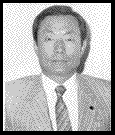 The birth of the
Korea Hapkido Federation can be traced to Grandmaster Ji, Han Jae. In 1973 he
invited two advanced masters of Hapkido: Kim, Moo Wong, and Myung, Jae Nam, to
join him. Both of which were previously his students. They untied their
individual organizations. They named the newly formed association, Dae Han Min
Kuk Hapkido Hyub Hae, The Republic of Korea Hapkido Federation. Ji, Han Jae was
the first to leave this organization. Grandmaster Myung eventually left the
organization, as well. A new organization emerged from the foundations of this
association, The Korea Hapkido Federation.
The birth of the
Korea Hapkido Federation can be traced to Grandmaster Ji, Han Jae. In 1973 he
invited two advanced masters of Hapkido: Kim, Moo Wong, and Myung, Jae Nam, to
join him. Both of which were previously his students. They untied their
individual organizations. They named the newly formed association, Dae Han Min
Kuk Hapkido Hyub Hae, The Republic of Korea Hapkido Federation. Ji, Han Jae was
the first to leave this organization. Grandmaster Myung eventually left the
organization, as well. A new organization emerged from the foundations of this
association, The Korea Hapkido Federation.
Oh, Se Lim was elected the president Korea Hapkido federation. He has remained the president of this organization since its inception. Today, the Korea Hapkido Federation is the largest, wholly Hapkido, governing body for Hapkido in the world.
Prior to 1990, the Korean Hapkido Federation, and all
other South Korean based non-Taekwondo martial art organizations, were required
to be a part of the South Korea Amateur Athletic Association. (this was the
equivalent to holding nonprofit status). Each of these associations were
required to register their Black Belts with the Korea Kido Association (Ki Do
Hae), if they wished their students and instructors to possess Korean
certification. In 1990, governmental and organizational laws changed in
During this period of change in
 Hapkido was
formally introduced into the
Hapkido was
formally introduced into the